Red wine has never been my drink of choice. If I were to nerd out over a drink, it would be tea (and you have seen me write essays on tea in this blog) and if I were to choose a wine to drink, it’s most likely a white wine or a rose. So why did I choose to go to St Emilion, a wine-growing region that only produces red wine?
Because I was in Bordeaux and I wanted to try something new.
Located about an hour away from Bordeaux city by car, St Emilion is a small, medieval town that also produces some really, really good red wines. During my trip to Bordeaux, my friend and I decided to book a half-day tour to St Emilion and it was such a good decision – I learnt a lot about wines and many of the things I learnt are also things that are present in tea.
Commonalities Between Wine and Tea
There is an ancient Chinese text called 茶酒论 or “Tea-Wine Discussion”. The text literally gives a voice to tea and wine and the two beverages argue over which of them is superior (spoiler: it’s water). I’m not going to rehash these arguments because I think both have their merits, but I do want to talk about some commonalities between the two that I learnt during my trip.
Terroir
Here’s the first thing I learnt: terroir. It’s not a new concept to me, because of course tea grown in the mountains taste different from tea grown at the foot of a mountain. And if a farm is sufficiently large, tea from different parts of the farm could taste different too (depending on how much sun it got, whether there was any change in the composition of the soil, etc).
It’s pretty much the same in wine, although I was surprised to learn that in France, terroir also includes human knowledge. But thinking about it, it makes sense: farming and making wine involves a lot of skill and of course, that would affect the taste of the wine.
As for St Emilion, it’s a hilly place and the limestone beneath the soil gives the wines here mineral notes, making it quite different from Pomerol wines, which are literally located just next to St Emilion. The limestone also absorbs water and provides natural drainage. This is actually quite important because it’s illegal to irrigate the vineyards in Bordeaux, so the limestone helps to nourish the vines.
Blending
The next thing we learnt about was the concept of blending. For teas like English Breakfast, and even sencha from bigger companies, blending is essential. The purpose of tea blending for unflavored teas is to create a consistent taste so that whenever you buy an English’s breakfast or sencha, you know what you’re going to get.
Blending in wine is a little similar. Because the weather changes every year, the profile of the wine made individual grape varietals will change. So winemakers blend the wines to create the best wines possible. But, unlike tea, they don’t always strive for a consistent taste. Toby from Chateau Cade-Bon, the chateau we visited, explained that the blending is to create the best tea for the year and for them, the wine for each year has its own identity that reflects the weather of the year.
Tasting
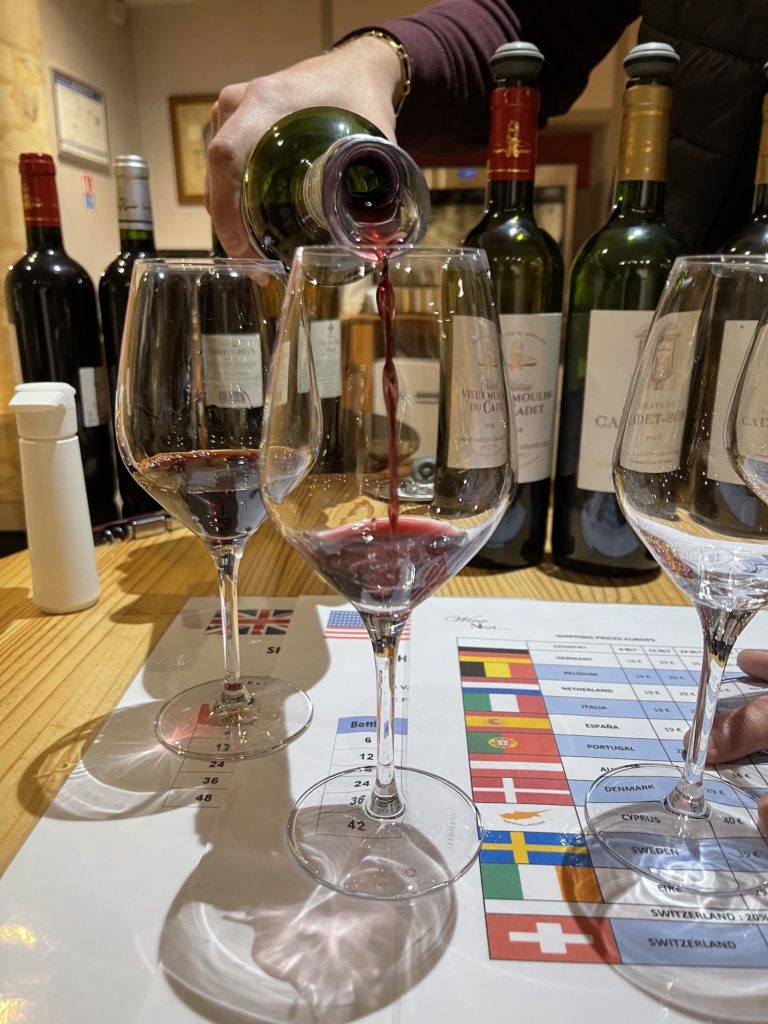
This is possibly where I see the biggest overlap between tea and wine, because the way you evaluate the two are very similar. With both drinks, you look at the colour and smell of the tea. When you taste it, you evaluate its body and you try to find notes of other foods in the tea (e.g. floral, vegetal, mineral, fruity).
Our guide, Karim, mentioned that when it comes to tasting wine, “the best wine is the one you like”, and that’s also something that I think applies to tea. Of course, when it comes to certain teas, there is a standard to which the teas can be judged. But as a tea drinker, the teas that I like best are the ones that are best for me.
Visiting St Emilion
Now that I’ve rambled on about how what I learned about wine is similar to tea (at least, in my opinion), I can talk about my visit to St Emilion! Since this was a half-day tour, we visited one chateau, did one wine tasting, and then explored the village.
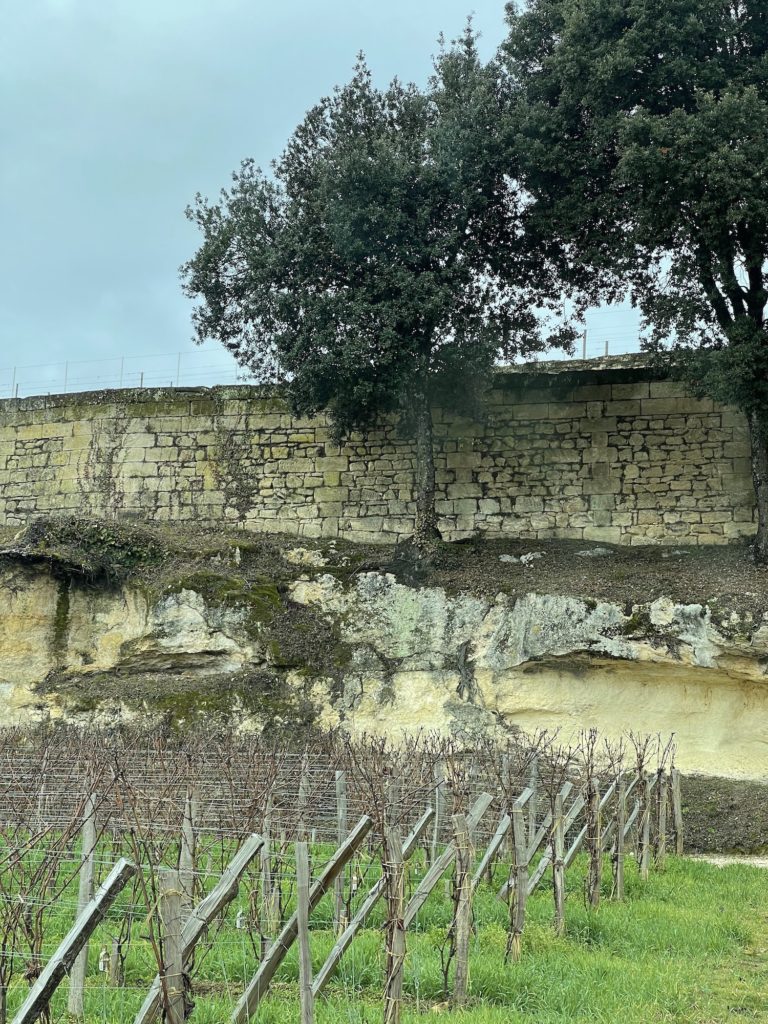
As a quick introduction to St Emilion – it’s one of the 65 appellations in Bordeaux (quick note: I have seen anywhere between 60 to 65 as the number of appellations in Bordeaux and have no idea why it varies – perhaps appellations come and go?). An appellation is a designation that is given to wines from specific geographies and to be able to use the appellation, the winemaker must follow certain rules. Within St Emilion, there are a few classes of wine:
- St Emilion: If you see just the name of the village on the table, then you should know that this wine is a table wine, one of the more casual wines for drinking. It should be under 20 euros for a bottle and there aren’t many restrictions on its production. These wines can be found on the market in less than a year after harvest.
- St Emilion Grand Cru: The next step up, Grand Cru wines must follow certain rules, such as having to age the wine for at least 12 months in oak barrels.
- Grand Cru Classe: After you’ve been certified as a Grand Cru chateau, you can apply for Grand Cru Classe – there are only 64 of these chateaus in St Emilion.
- Premier Grand Cru Classe: The best of the best, a chateau can only apply for this label after being a Grand Cru Classe for 10 years. There are only 18 chateaus with this and most of them are found on the hillier parts of St Emilion.
Chateau Cadet Bon
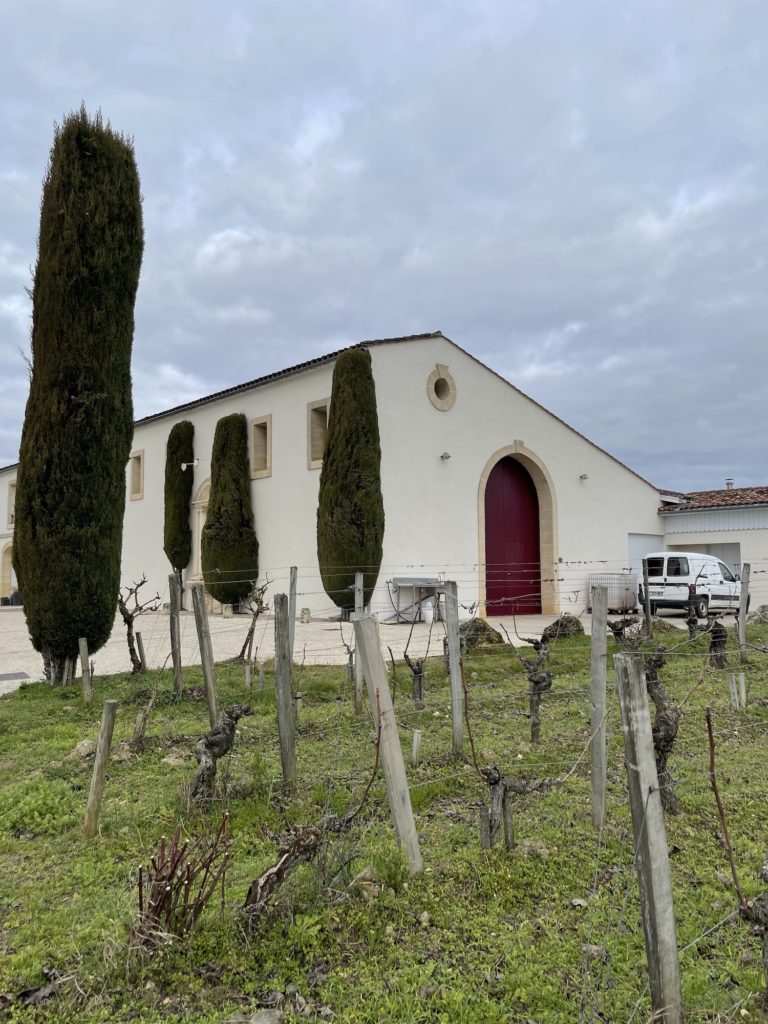
The chateau that we visited was called Chateau Cadet Bon and it is a Grand Crue Classe. It was founded by Justin Bon in 16th century but is now owned by Monsieur Richard, who bought the chateau 21 years ago.
Side note: Chateau means “castle” in French, but when it comes to wine, a chateau is also a designation. To be labelled as a chateau in Bordeaux, you must farm, produce, and bottle your wine all on the farm. The actual building where you make the wine doesn’t have to be a castle (in fact, the relatively small average size of farms in this appellation means that smaller buildings are more efficient).
The first thing we did was to visit the vineyards. It’s still winter, so you can’t see anything on the vines, but I learnt that the thicker and more twisted the vines are, the older it is. Old vines can have very deep roots of 8 to 12 metres!
Chateau Cadet Bon grows the Merlot and Cabernet Franc varieties of grapes, so their wines are normally a blend of the two. Carbenet Franc is the father of the Cabernet Sauvignon, which is actually a grape that I’ve heard of!
After looking at the vineyards, we went into the chateau to see how wine is made. I will not bore you with a step by step account but here are three cool things that I learnt:
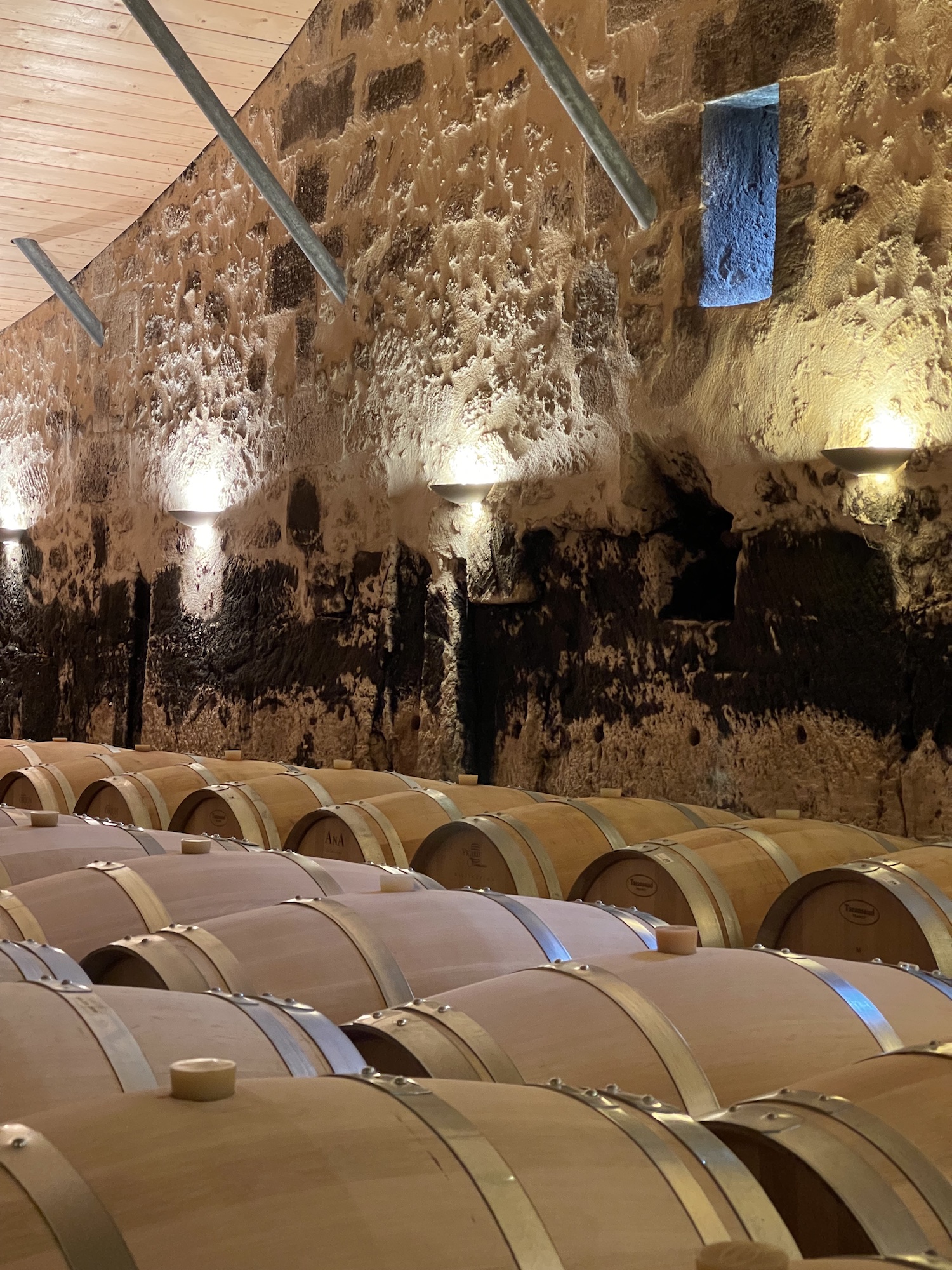
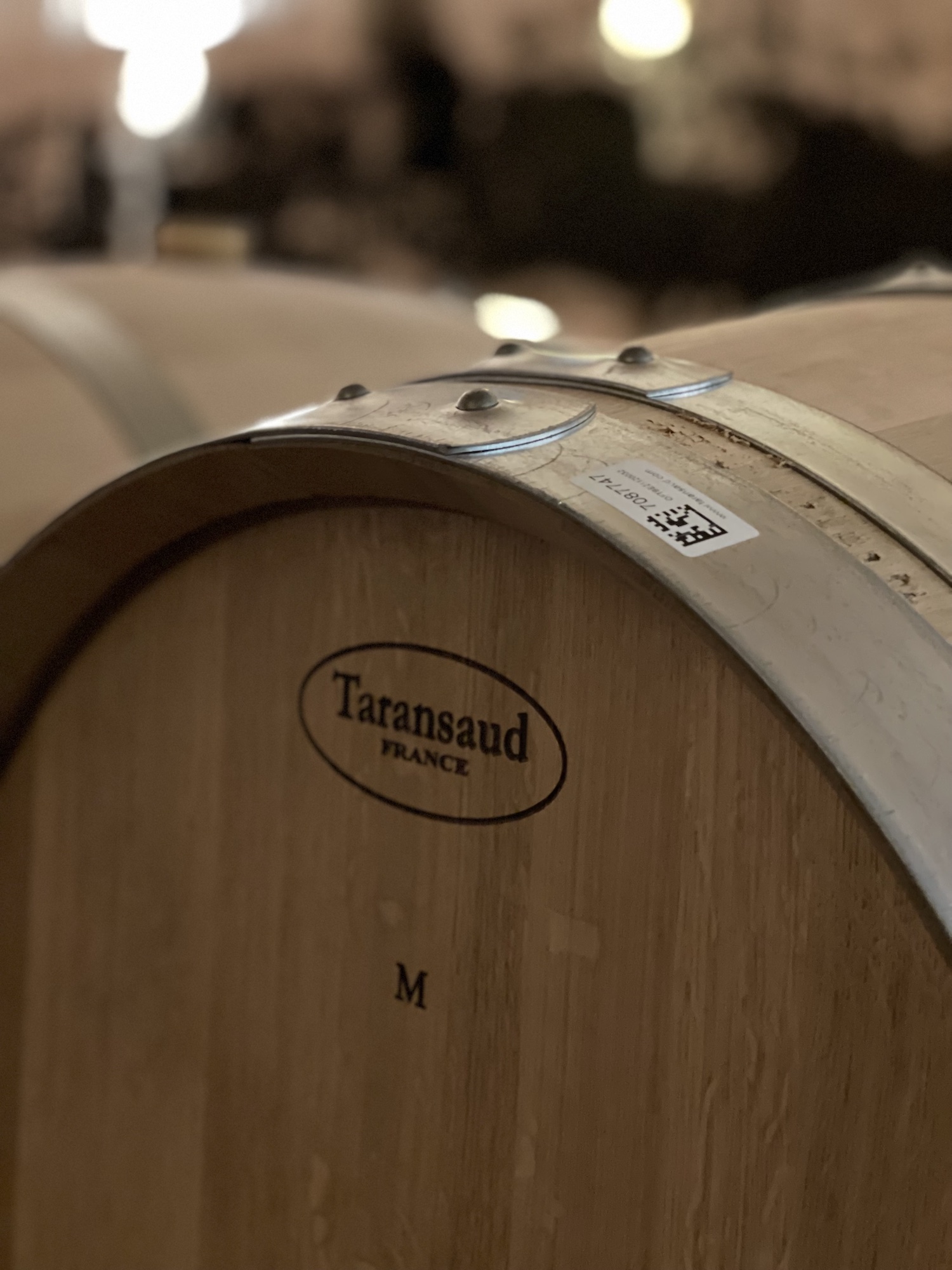
- When the grapes are turned into wine, they are made into wine according to plot. Each plot can have a different varietal and/or a different age of the vine, so keeping track is important because the wine from each plot will have some differences and that’s what they will use to blend the wine.
- The room for aging needs to be kept between 10 to 15 degrees celsius and at a humidity between 80-85%. This gives rise to a black mold on the wall which is actually a good thing! It shows that the room is good for aging.
- The wine is aged in French oak barrels, who are an important but underappreciated part of the wine industry (at least, in the eyes of our guide). These barrels are made without glue and they will havea second life – the barrel is normally used for three ageing cycles, after which it’s sold to age other produts, such as brandy and scotch.
Tasting Some Wines
When our visit to the chateau was complete, we were ready to taste some wines! We got to try 5 different types of wines:
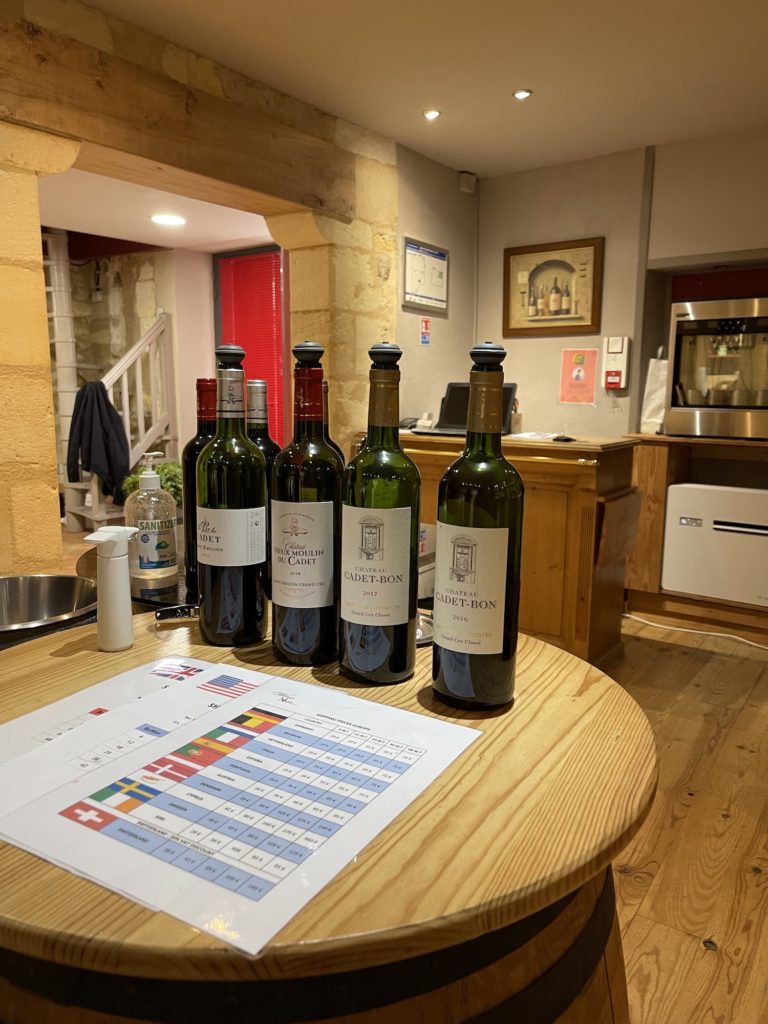
- Le Petit du Cadet 2019 – This is a table wine that was aged only for 6 months and it goes straight to back of throat for me.
- Château Vieux Moulin du Cadet 2018 – This is a Grand Cru made of pure Merlot (have a pure merlot from one farm reminds me of the Sayama origin tea concept). I felt that this tea lingered in the middle of the mouth more and the astringency was pretty pleasing.
- Château Cadet Bon 2017 – This was a difficult year in terms of quantity, because a frost in beginning of April destroyed 50% of production (and destroyed only Merlot grapes). This means that the wine contains more Cabernet Franc than normal and I found it to have strong spicy and bitter notes with a very strong aftertaste.
- Château Cadet Bon 2018 – This is a St Emilion wine in a more classic style, and it was produced during excellent weather year. For me, this wine was rounder and felt a bit more balanced, making it my favourite
- Chateau Oncles Haut Mazeyers 2018 – Our last wine was a Pomerol Wine that is made purely from merlot grapes and which was aged 18 months. It was very fruity with slightly clearer vanilla notes and was another favourite of the ones I tasted.
Exploring the Village
After our tasting, everyone was more relaxed and ready for a little walk around the village. St Emilion village is a small but beautiful village with 1 pharmacy but 48 wine shops! Needless to say, the meeting point was the pharmacy because there’s no way we could have gone to the wrong place.
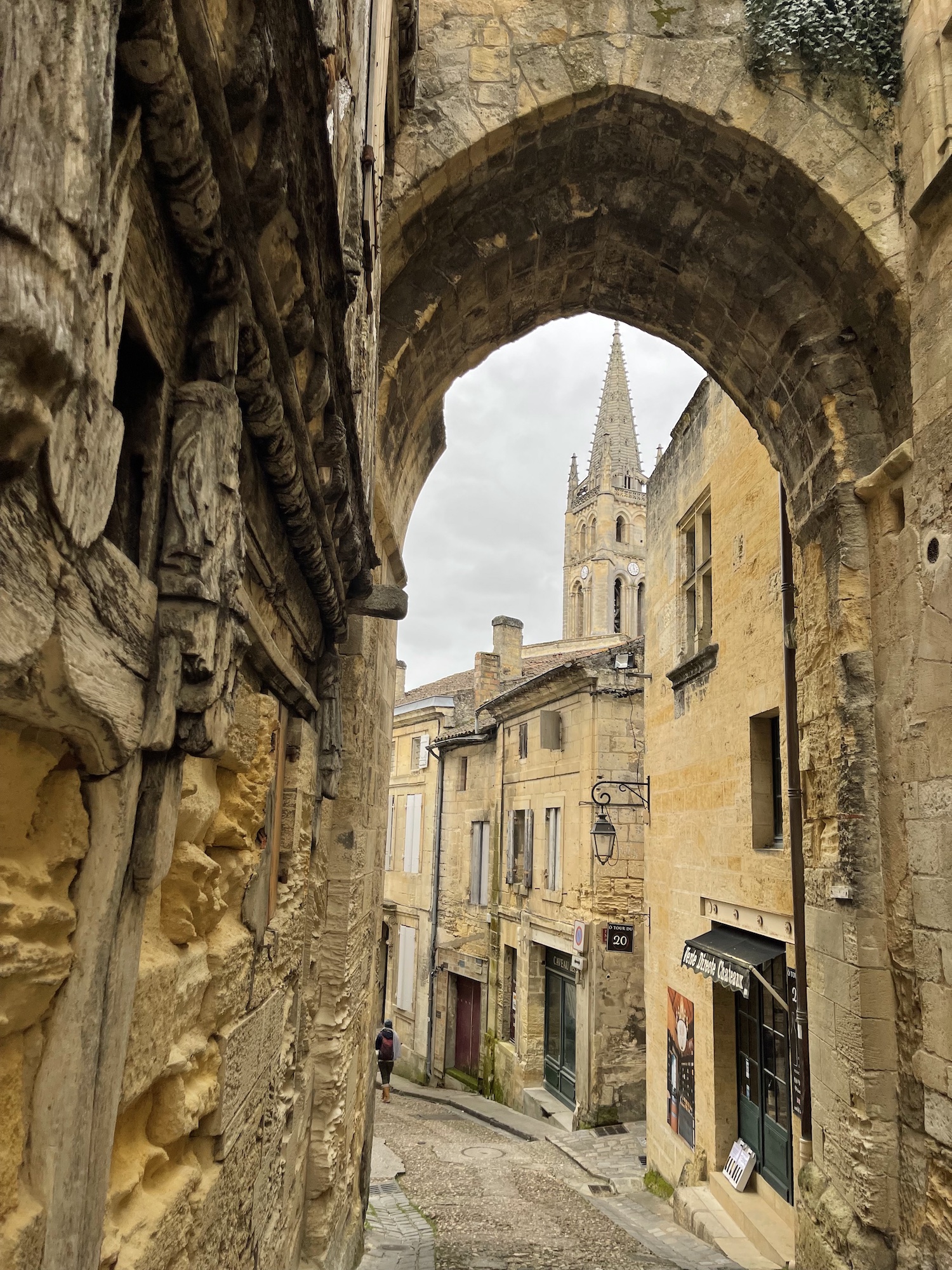
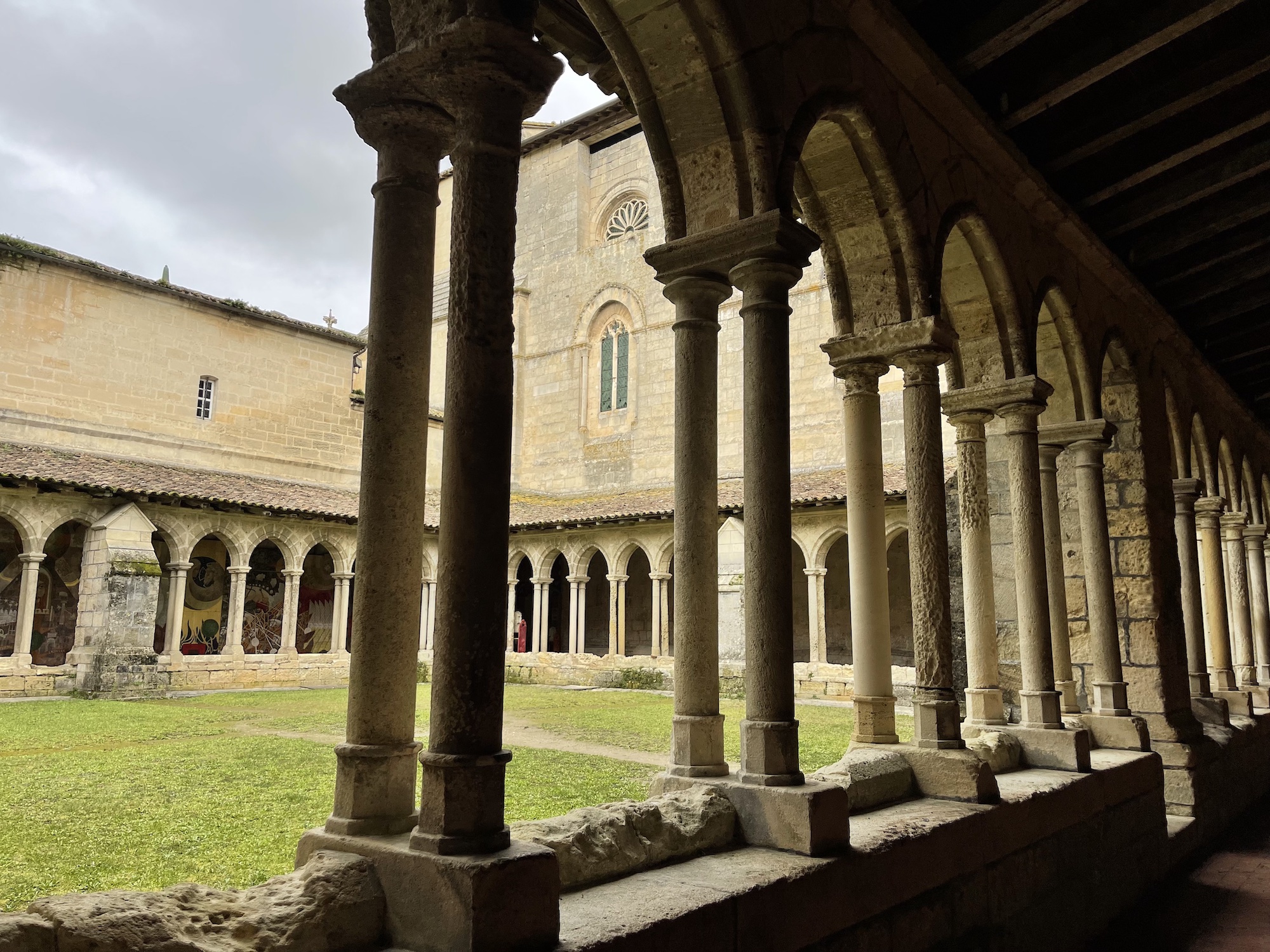
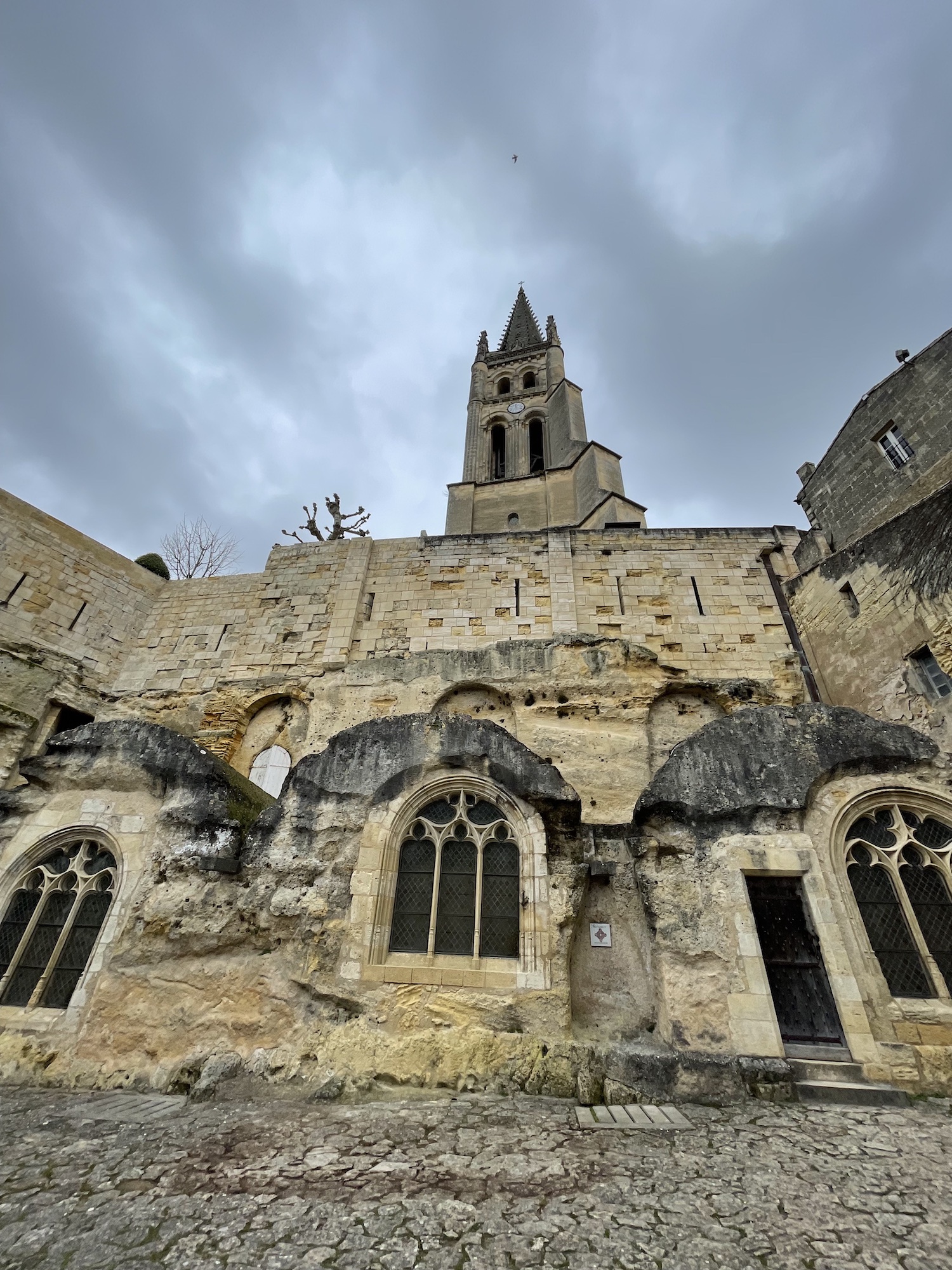
The name of this village pretty much gives away the identity of its founder. Emilion, a Benedictine monk, founded in the 8th century and its golden age was during the 12th-13th centuries. Wine seems to have been an important part of this village for a long time because the monks here were given a daily allowance of 3 litres of wine! I mentioned that the vineyards of St Milion have limestone underneath the soil and the village is no exception – it was built directly on limestone.
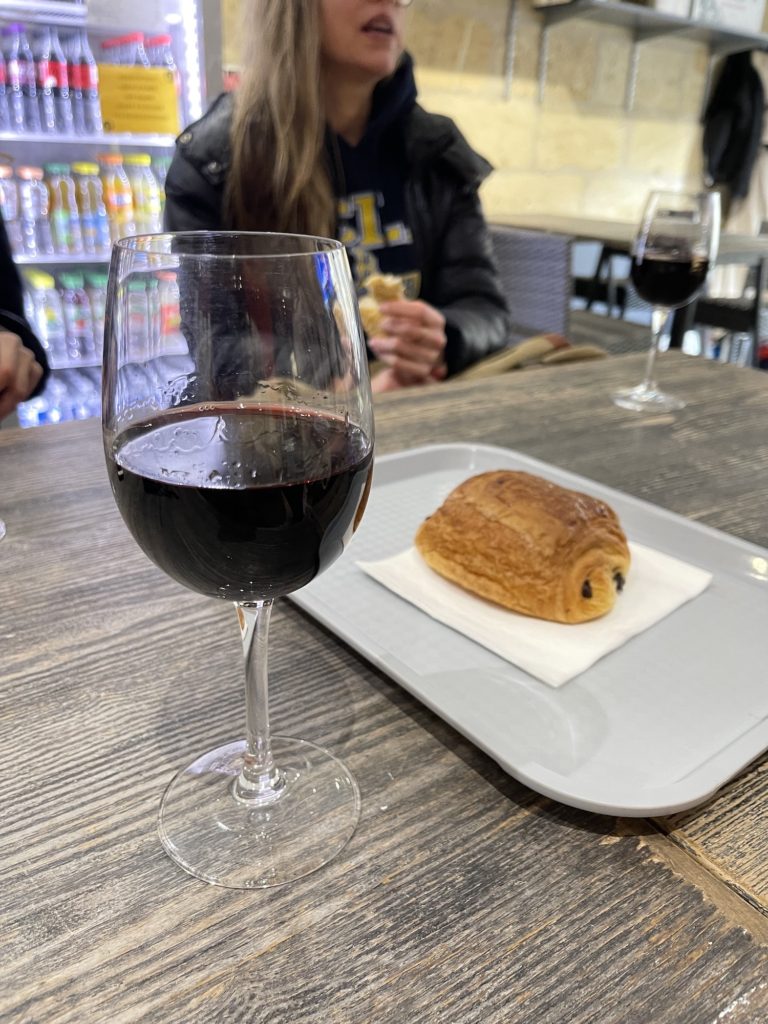
My friend and I toured the vineyard and village with two other girls and we had such a good time that we explored the village together during our free time as well! We ended up having a glass of (what else but) St Emilion wine at a cafe to end our trip.
About the Tour I Booked
If you’re looking for a half-day tour to St Emilion, I can definitely say that I really enjoyed this one that I booked! My tour guide was Karim and he was an excellent guide, giving us a very thorough introduction to wine on the way to St Emilion and food recommendations to Bordeaux on the way back. He was also very patient in answering our questions, so we had a really fun time. I booked this tour through the Bordeaux Tourism website, which is also where I bought the Bordeaux City Pass (more on that soon).
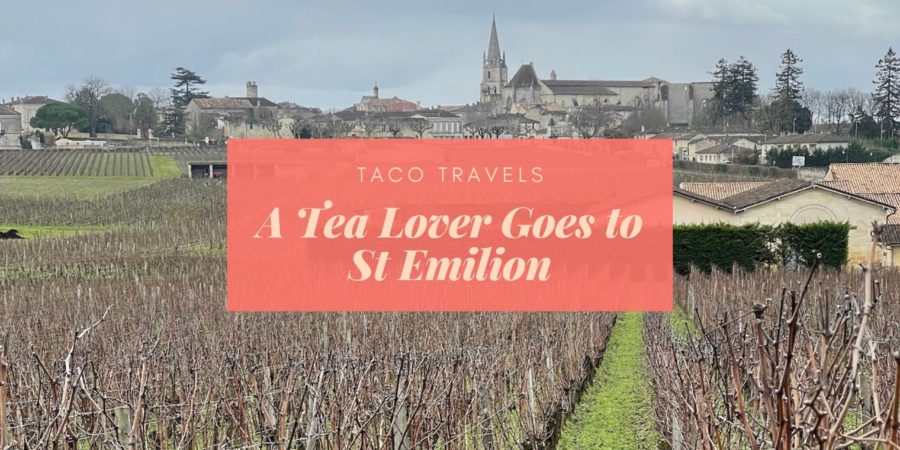
I don’t drink wine and so I know literally nothing about it, but this was really interesting!
Thank you!! I found the similarities really interesting so I had to write about it haha
[…] region has a lot of microclimates. Having been to St Emilion, I knew there were certain years that were better for wines and was wondering if it was the same […]